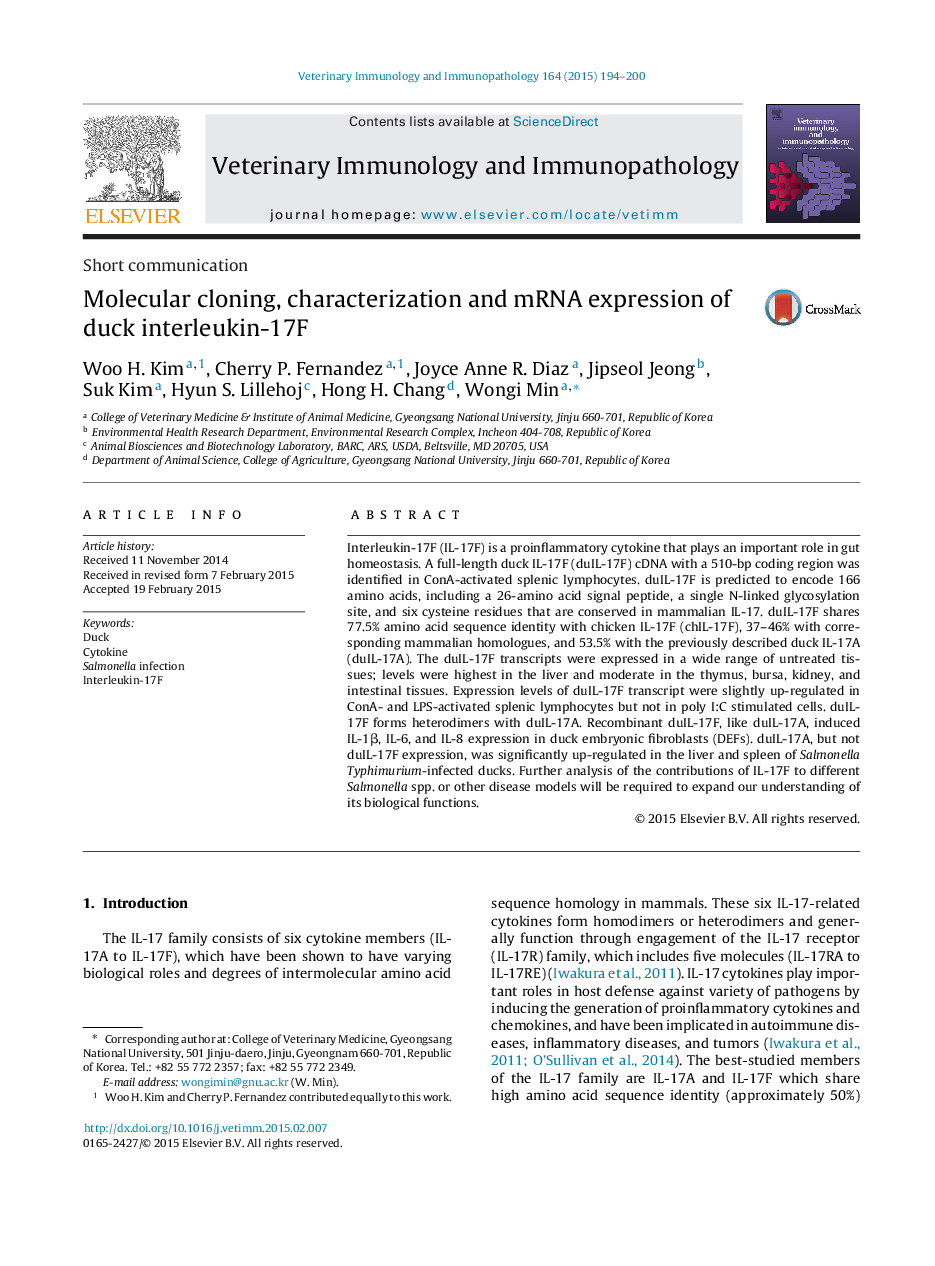| Article ID | Journal | Published Year | Pages | File Type |
|---|---|---|---|---|
| 2461443 | Veterinary Immunology and Immunopathology | 2015 | 7 Pages |
•Molecular cloning and identification of duck IL-17F.•Heterodimer formation of duck IL-17F with duck IL-17A.•The IL-17A, not IL-17F, was up-regulated in tissues of Salmonella-infected ducks.
Interleukin-17F (IL-17F) is a proinflammatory cytokine that plays an important role in gut homeostasis. A full-length duck IL-17F (duIL-17F) cDNA with a 510-bp coding region was identified in ConA-activated splenic lymphocytes. duIL-17F is predicted to encode 166 amino acids, including a 26-amino acid signal peptide, a single N-linked glycosylation site, and six cysteine residues that are conserved in mammalian IL-17. duIL-17F shares 77.5% amino acid sequence identity with chicken IL-17F (chIL-17F), 37–46% with corresponding mammalian homologues, and 53.5% with the previously described duck IL-17A (duIL-17A). The duIL-17F transcripts were expressed in a wide range of untreated tissues; levels were highest in the liver and moderate in the thymus, bursa, kidney, and intestinal tissues. Expression levels of duIL-17F transcript were slightly up-regulated in ConA- and LPS-activated splenic lymphocytes but not in poly I:C stimulated cells. duIL-17F forms heterodimers with duIL-17A. Recombinant duIL-17F, like duIL-17A, induced IL-1β, IL-6, and IL-8 expression in duck embryonic fibroblasts (DEFs). duIL-17A, but not duIL-17F expression, was significantly up-regulated in the liver and spleen of Salmonella Typhimurium-infected ducks. Further analysis of the contributions of IL-17F to different Salmonella spp. or other disease models will be required to expand our understanding of its biological functions.
